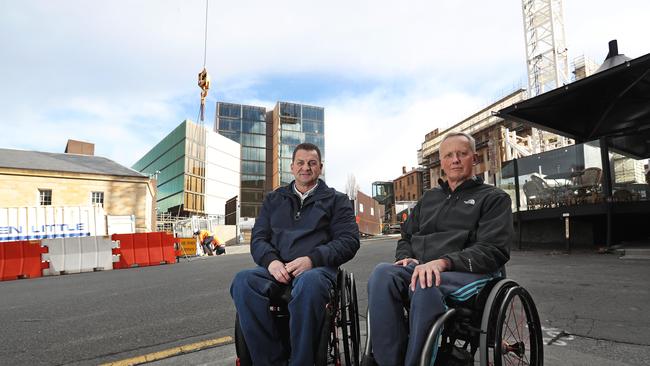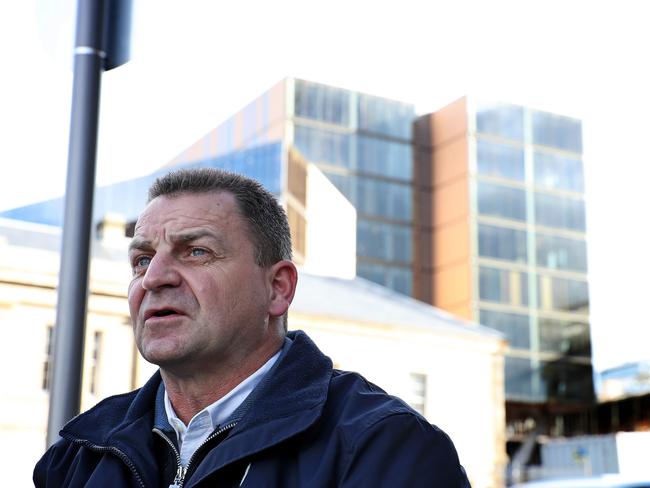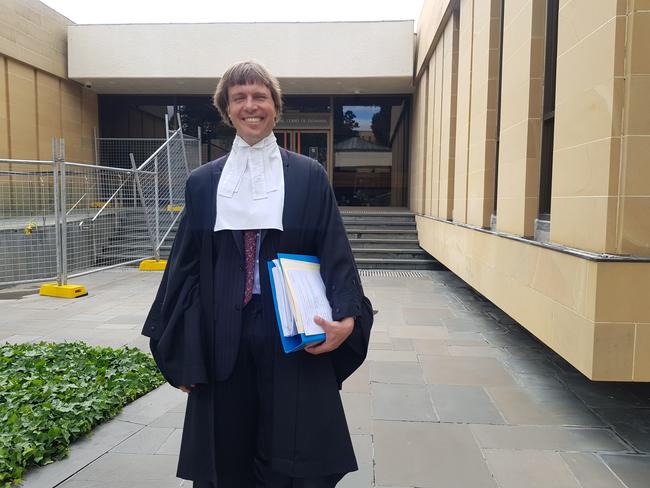Anti-Discrimination Tribunal to hear disability challenge to Parliament Square stairs access
A man with paraplegia has won a court battle against the developers of the “landmark” $200M Parliament Square project, in an ongoing stoush over access to one of its main entrances. LATEST >>

Police & Courts
Don't miss out on the headlines from Police & Courts. Followed categories will be added to My News.
- Anti-Discrimination Tribunal hears case for a third accessible entrance at Parliament Square
- Parliament Square landowner fails $5 million builder restitution bid
A DISABILITY advocate has won an interim court battle against the Parliament Square developers in an ongoing stoush over access to one of its main entrances.
David Cawthorn, who has paraplegia and relies on a wheelchair for mobility, argued a lift needed to be installed near a set of stairs opposite the Executive Building.
The Anti-Discrimination Tribunal had dismissed Mr Cawthorn’s case, saying it didn’t have jurisdiction over matters concerning federal legislation.

But on Wednesday, following an appeal by Mr Cawthorn, the Full Court of the Supreme Court overturned the tribunal’s decision not to hear his case.
Mr Cawthorn said the news was “fantastic, a big relief”.
“Putting it ironically, it’s been a David and Goliath battle,” he said.
“Some developers will spend more money avoiding putting access in, than what they would have spent in the first place.”
He said he was confident of success when the tribunal heard his case, likely to be mid-2021.
The $200 million “landmark project” in the block behind Parliament House – which is nearing completion – will feature government office spaces, open public areas, shops, cafes, a luxury Marriott hotel named The Tasman, plus three entrances.
Citta Hobart, the developer, plus the landowner have provided level, disability access at two of those entrances.
However, a third entrance behind Parliament House on Murray Street only provides access only by way of stairs.


In 2016, Mr Cawthorn lodged a complaint with the Equal Opportunity Commissioner that people with spinal cord injuries who rely on wheelchairs for mobility would be unable to use the access as they were unable to climb stairs.
He said wheelchair users would instead be required to use another, level access point known as “the arch” further up the hill, or a third point some 150m away on Salamanca Place.
Mr Cawthorn said this amounted to “direct discrimination” against people with disabilities.
The Anti-Discrimination Tribunal dismissed the case after determining it didn’t have jurisdiction, given it dealt with building disability standards covered by federal legislation.
But on Wednesday, Chief Justice Alan Blow ruled the tribunal did indeed have jurisdiction and had a “duty” to hear the case given there was no inconsistency between relevant federal and state legislation.
Lawyer Ben Bartl said he was “extremely relieved” by the Full Court’s decision.
“We’re pleased that the technicality has been struck out and that we will now get an opportunity to have the substantive case heard,” he said.
“We’re confident in the merits of the case. We’ve got experts from right around Australia that are prepared to give evidence in support of David’s case.”



